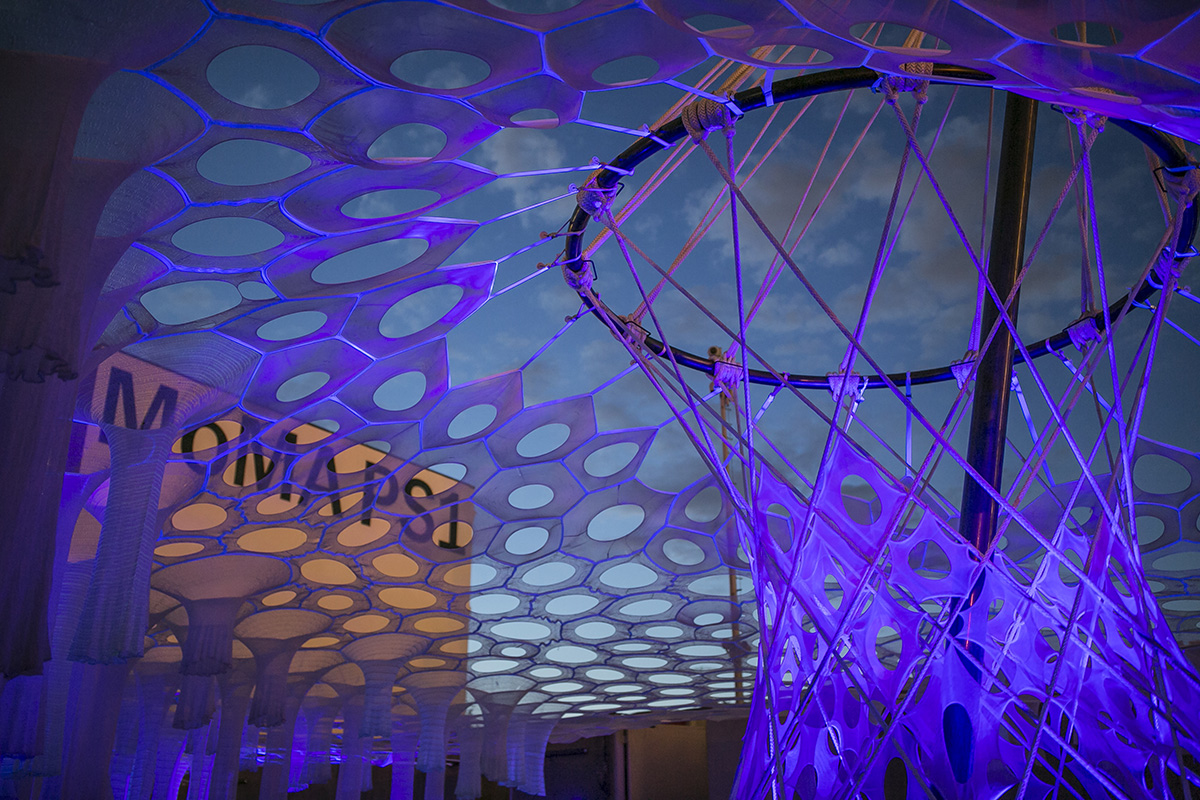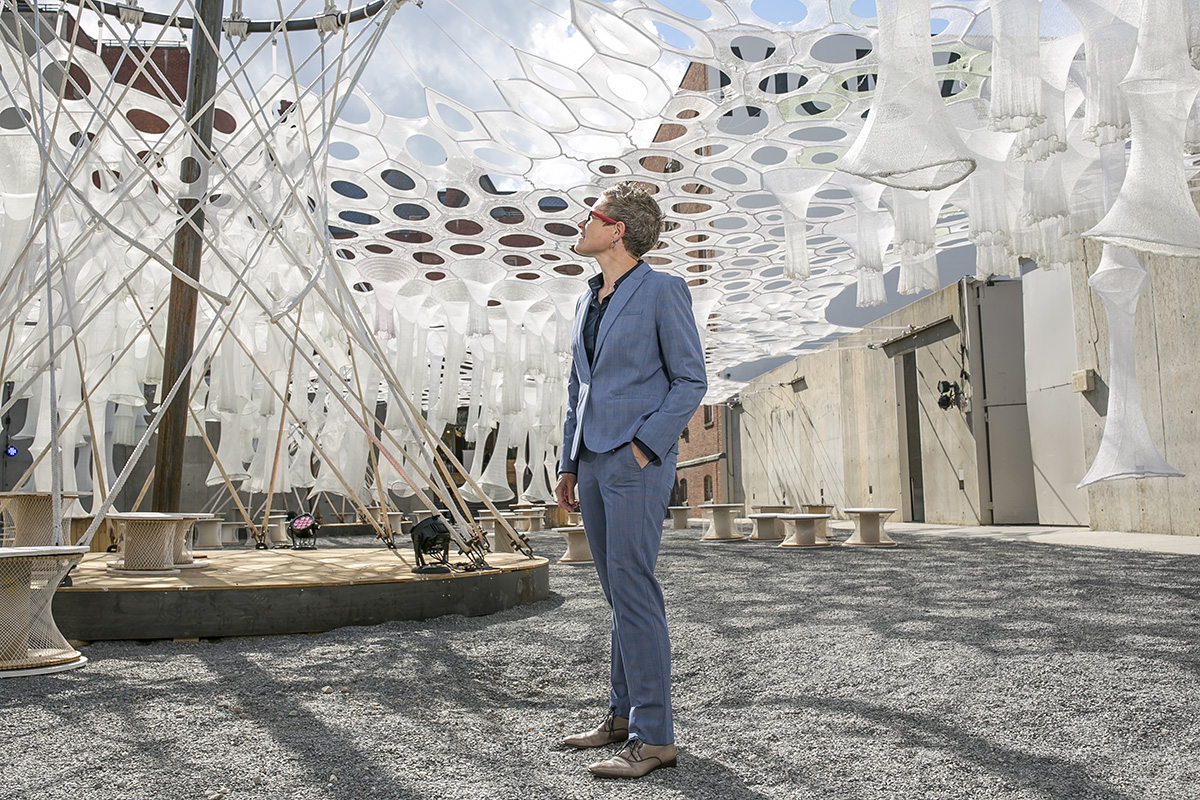Glowing and misting, Jenny Sabin's 'Lumen' installation opens
By Daniel Aloi


Associate professor of architecture Jenny Sabin’s latest work is a temporary outdoor installation that functions as a work of art and provides shade, seating and cooling for visitors to the Museum of Modern Art (MoMA) PS1 in Long Island City, Queens.
“Lumen,” Sabin’s interactive knitted-fiber installation in the museum’s entrance courtyard, was featured at a press reception June 27. Open to the public June 29 through Sept. 4, the project won MoMA’s 2017 Young Architects Program (YAP) competition.
“From its conception, it was really important for this to operate as an environment, not just an object,” Sabin said. “In the context of YAP, I was able to take it to a scale that I had never achieved yet, so it’s really exciting.”
Tethered to the courtyard walls and raised by steel-and-rope towers, two canopies float over the main courtyard and an adjacent smaller courtyard space.
“Lumen” incorporates fibers that react to and absorb energy from the sun, and provides different experiences by night and day, Sabin said. Solar-reactive fibers produce subtle colors – pinks and yellows, blues and greens – in sunlight, and photo-luminescent fibers glow brightly at night.
“It’s meant to be touched and interactive,” Sabin said. During the heat of the day, people walking through the installation trigger sensors connected to a misting system. As knitted shapes hanging down from the canopy sway in the breeze, “the misting encourages people to dance with it,” she said. “This also was an opportunity to take some ongoing research in the lab in terms of interactivity to this kind of scale.”
Sabin also designed a wooden dance floor in the main courtyard for summer events at PS1, and 100 recycled wooden spools, with fiber skins woven by a robot in her lab, provide seating within “Lumen.” The canopy in the small courtyard also offers a space conducive to pause and reflection, she said.
“Lumen” will be a highlight of PS1’s Saturday Warm Up series of musical events, from July 1 to Sept. 2, which attracts up to 40,000 attendees over the summer.
“This lighting program is an incredible way to highlight the music, and to make it really exciting for those visitors at night, amplifying the experience,” said Molly Kurzius, MoMA PS1’s director of communications. “It’s something really dynamic and not just a static installation in the courtyard.”


Sabin has worked with biologically inspired structures and investigated nonstandard and fibrous networks for a number of years, with projects including two commissions for Nike, the first a pavilion for Nike’s New York City-based FlyKnit Collective.
“This is the first time I’ve used the sun to get the materials to respond,” Sabin said. “Before it’s always been in an enclosed space, controlled by the lighting. With so much more ambient light, it’s more subtle, but I really like it.”
“Lumen” is the result of about six and a half years of research and development, she said, in a generative design process involving biology, engineering, mathematics and materials science. It took almost three months to fabricate all of the components and six weeks to install the piece, which uses more than 1 million yards of fiber in more than 1,300 digitally knitted components.
Sabin is the Arthur L. and Isabel B. Wiesenberger Associate Professor in the College of Architecture, Art and Planning. “Lumen” was created by Jenny Sabin Studio, with input from the Sabin Design Lab at Cornell and working closely with structural engineer Clayton Binkley and others at the design and engineering firm Arup. Attendees at the opening reception included MoMA representatives, as well as architecture faculty members Mark Cruvellier, Timur Dogan, Leslie Lok, Sasa Zivkovic, Luben Dimcheff, B.Arch. ’99; Aleksandr Mergold, B.Arch. ’00 and Andrea Simitch, B.Arch.’79, and Cornell students and alumni who participated in the project.
YAP gives architects an opportunity to design and present innovative projects within guidelines that address environmental issues, such as sustainability and recycling, in the context of creative designs for a temporary outdoor installation providing shade, seating and water.
Caroline O’Donnell, the Edgar A. Tafel Associate Professor of Architecture at Cornell, won the YAP competition in 2013, when her “Party Wall” pavilion was chosen to be installed at PS1. Now in its 18th year, YAP has been supported by Bloomberg Philanthropies since 2007.
Media Contact
Get Cornell news delivered right to your inbox.
Subscribe